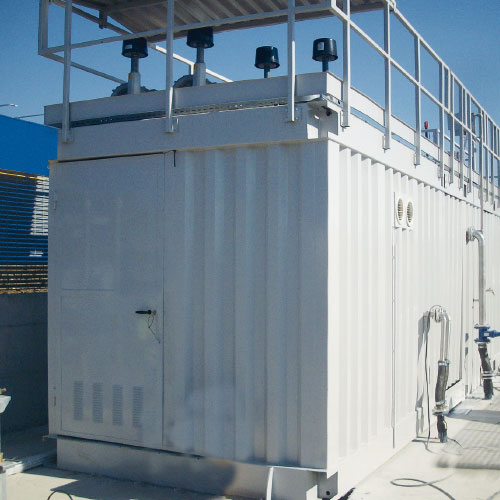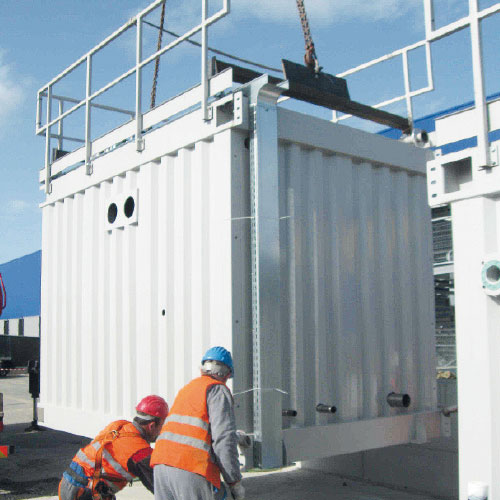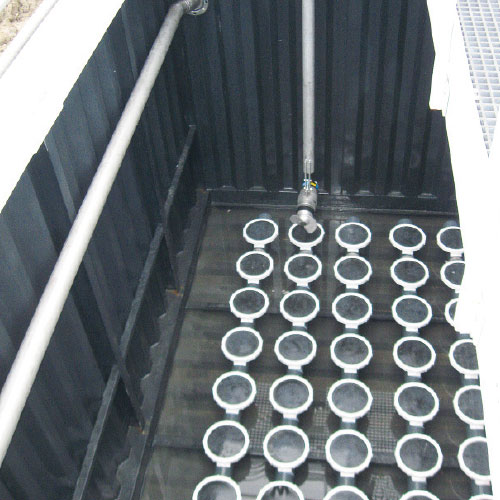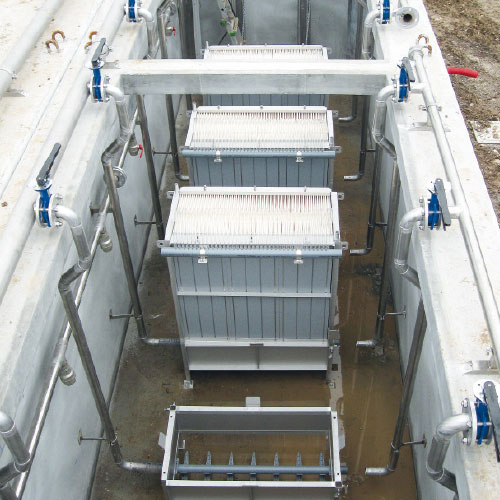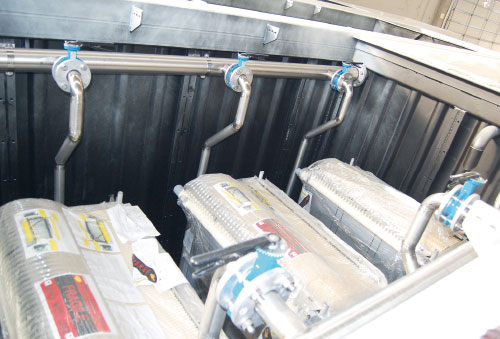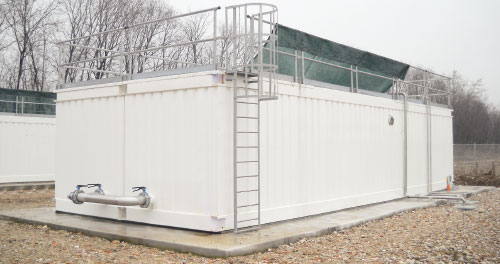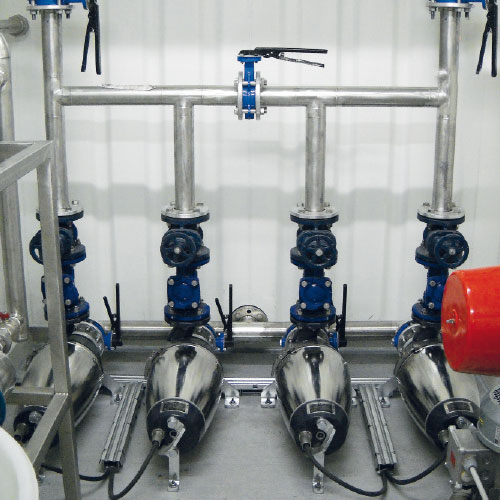Treatment process
The sewage water treatment plant type EMS Water Technology series EMBR is modular and independent, designed to receive discharge water directly from sewers or septic tanks.
The process is divided into the following sections:
• Pre-treatment consisting of fine screening and oil separation
• Aerated biological oxidation
• Membrane filtering system (flat or hollow fibre)
• Sludge recirculation
• Sludge treatment and thickening
• Final disinfection
• Effluent discharge system
• General control electrical panel
Pre-treatments
The pre-treatment aims at consistently reducing the quantity of raw solids incoming from the discharges by the means of an automated fine sieving or by primary sedimentation in case of small communities.
Furthermore, to ensure a good protection degree for the membranes we recommend to carry out also a pre treatment with sand and oil separation by floatation and separation of the light substances such as oils and greases.
Aerated biological oxidation
The active sludge plants type EUROMEC SERVICE series EMBR carry out a biological treatment by the means of bacteria colonies that staying suspended into the sewage water use the biodegradable organic material to feed themselves and obtain the necessary energy to synthetize new cells. This method allows the formation of more and more stable substances up to the complete organic decay.
The proposed active sludge system is composed of one or more oxidation tanks in series, a blower to feed the distribution network composed of pipes and fine bubbles air diffusers installed onto the tanks bottom.
Membrane filtering system
Membrane filtering is the best currently available technique to respect the restrictive outgoing parameters (less than 20 ppm of BOD and less than 20 ppm of SS) . it ensures the highest efficiency for the BOD and suspended solids removal as well as a complete bacterial purification and it also allows to recycle the water for agricultural purposes or for toilet w.c.
the membrane module is installed inside one or more tanks which are fed by the aerated oxidation sections. The biological sludge separates from the water to be treated inside these tanks. The sewage water to be treated is filtered from the outer part of the membranes towards their inner part thanks to the sucking action of a particular pump which subsequently sends the permeate to the disinfection phase before the final overflow to the discharge or recirculation.
Sludge recirculation
The separated sludge are recirculated by the means of a pump in order to guarantee the best possible result for the total oxidation process.
The excess sludge is sent towards the final dehydration system.
Sludge treatment
The excess sludge incoming from the sludge pump is sent to a dehydration unit . This unit is normally composed of draining bags located inside a steel structure allowing to reach il 15-30% of dried solids content after just an hour, up to the 50-80% after storage and dehydration . When the sludge contained into the draining bags reach the desired water concentration they may be taken out, closed and disposed of. The drained water may be collected and sent by an external pump to the head of the sewage water plant.
Disinfection
the final disinfection intended as safety may be carried out by dosing liquid or tablets of hypo chlorite.
Alternatively, the final disinfection may be carried out by U.V. rays by the means of suitable lamps.
Effluent discharge system
The treated and disinfected water is collected and stored in suitable tanks and then sent to the discharge or recirculation by an electrical pump managed by level floats.
